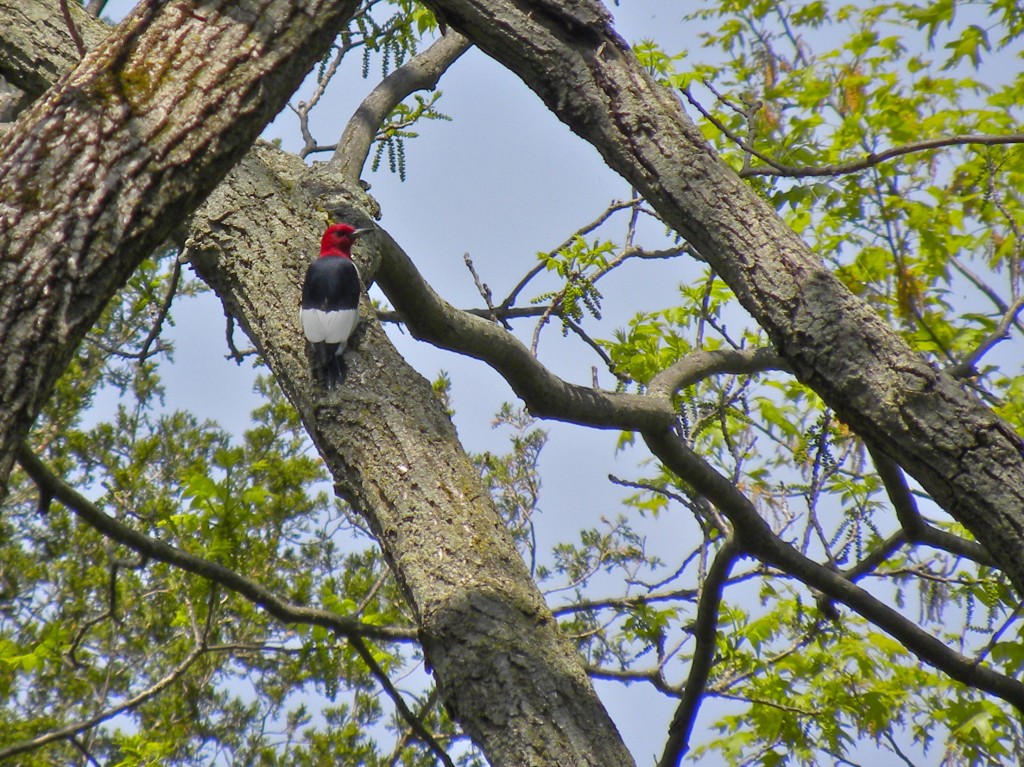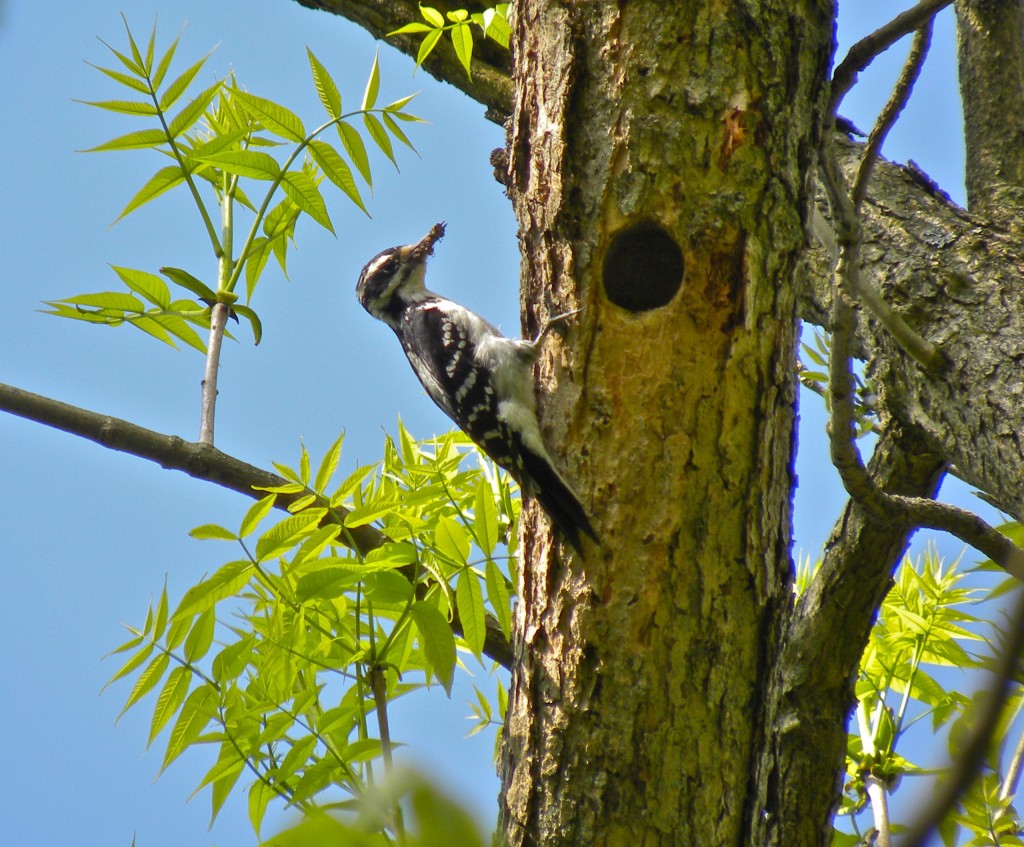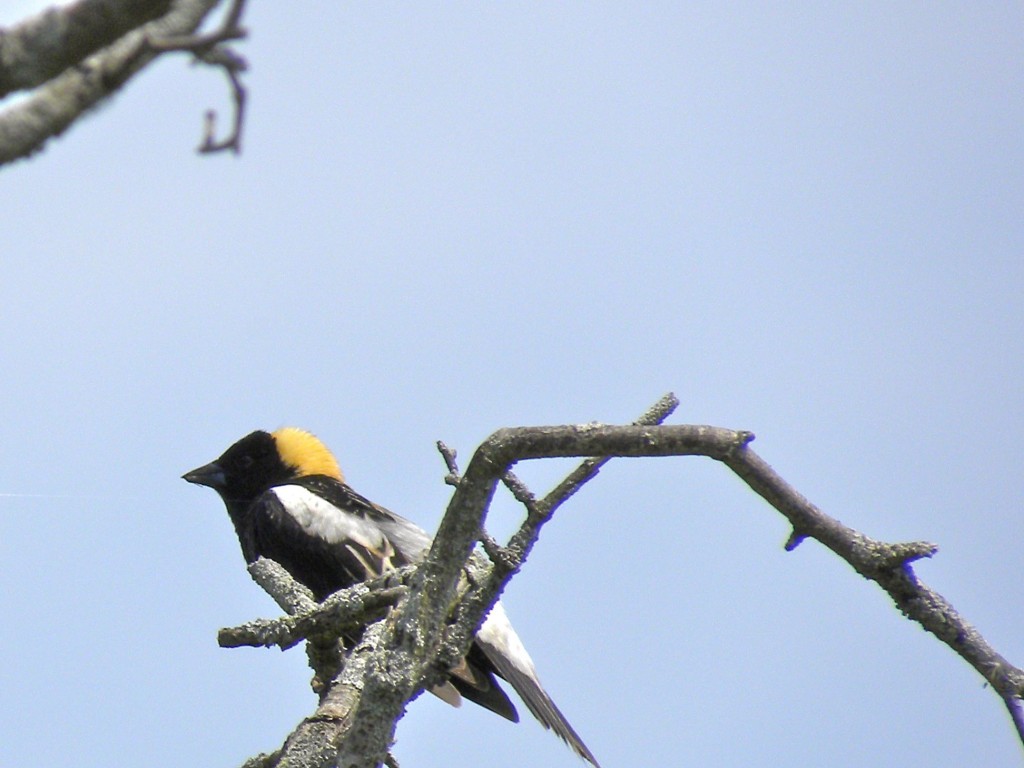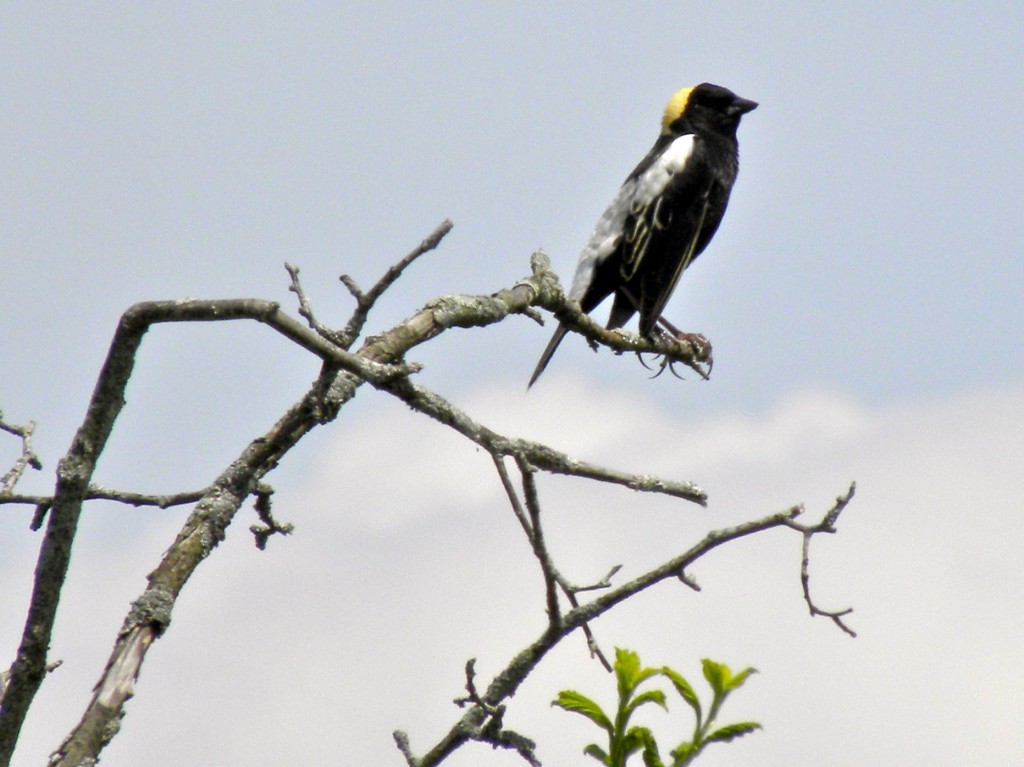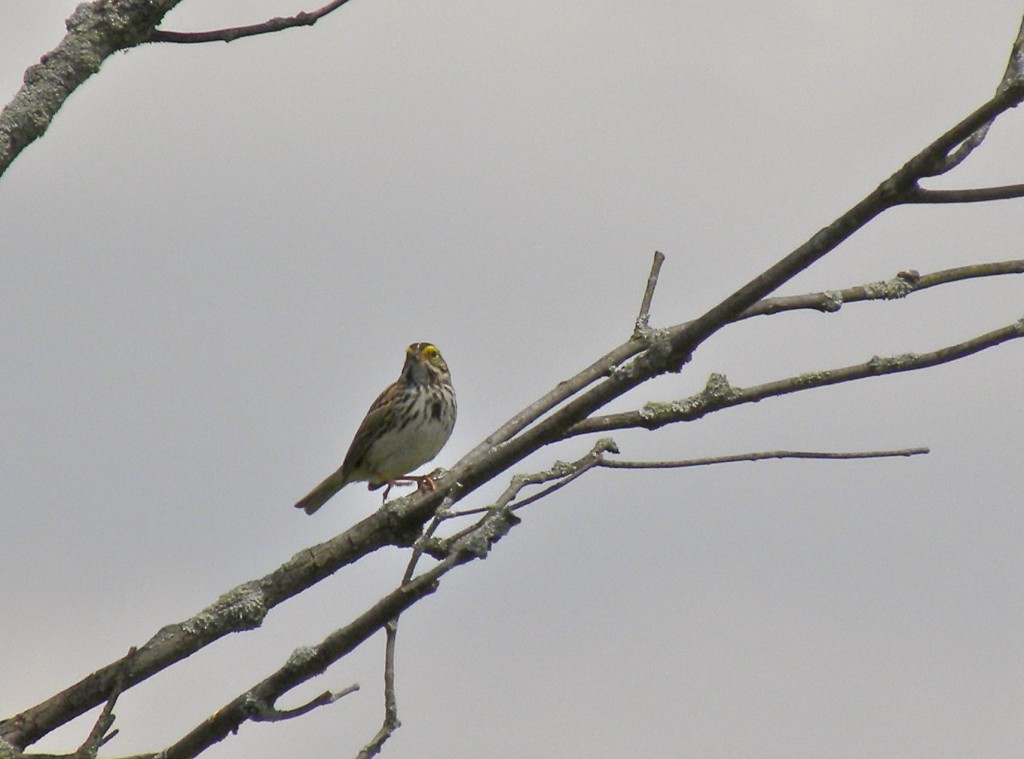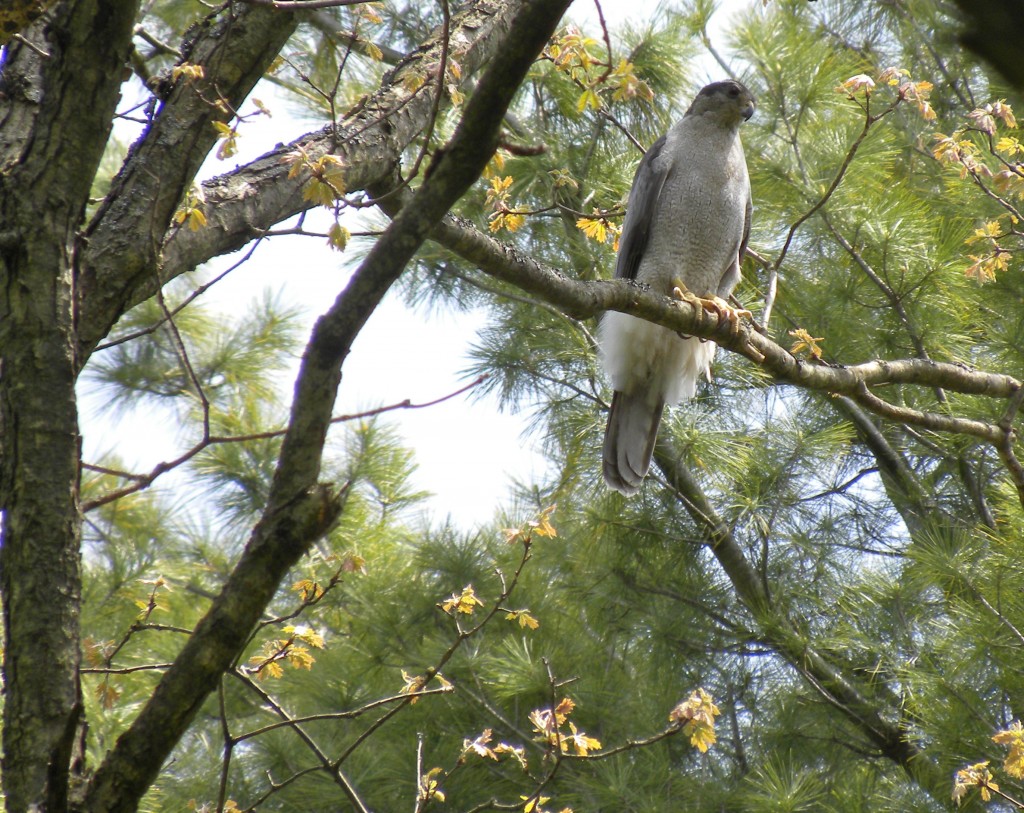May 19 2012. Rondeau Provincial Park seems to take second place to Point Pelee as a birders’ destination. For my part I prefer Rondeau for two reasons: I rather dislike crowds, and a friend offers us free accommodation at Rondeau. Rondeau, Point Pelee and Long Point are the three sandy peninsulas that reach out into Lake Erie. All of them are bird rich, especially in spring when the northbound migrants move in. The birds come in overnight waves and jump across the lake, landing at these easier to reach outposts.
At dawn we explored the trails at the south end of Rondeau, The place was ringing with bird song, much of it from birds that have been here a while but still need to assert their territorial rights: Yellow warblers, Gray Catbirds and Baltimore Orioles in particular. But there were plenty of really nice new arrivals including Tennessee, Magnolia and Blackpoll Warblers and we followed the liquid song of a Mourning Warbler and managed to get a decently long look at him.
Mourning Warblers tend to stay down low avoiding eye-contact, so seeing one is always a special event. A little later we watched a Philadelphia Vireo and a Chestnut–sided Warbler at close quarters in a low, scrubby patch of dogwood. The warbler stayed around for a while and in the end I was able to get a decent photo of the it.
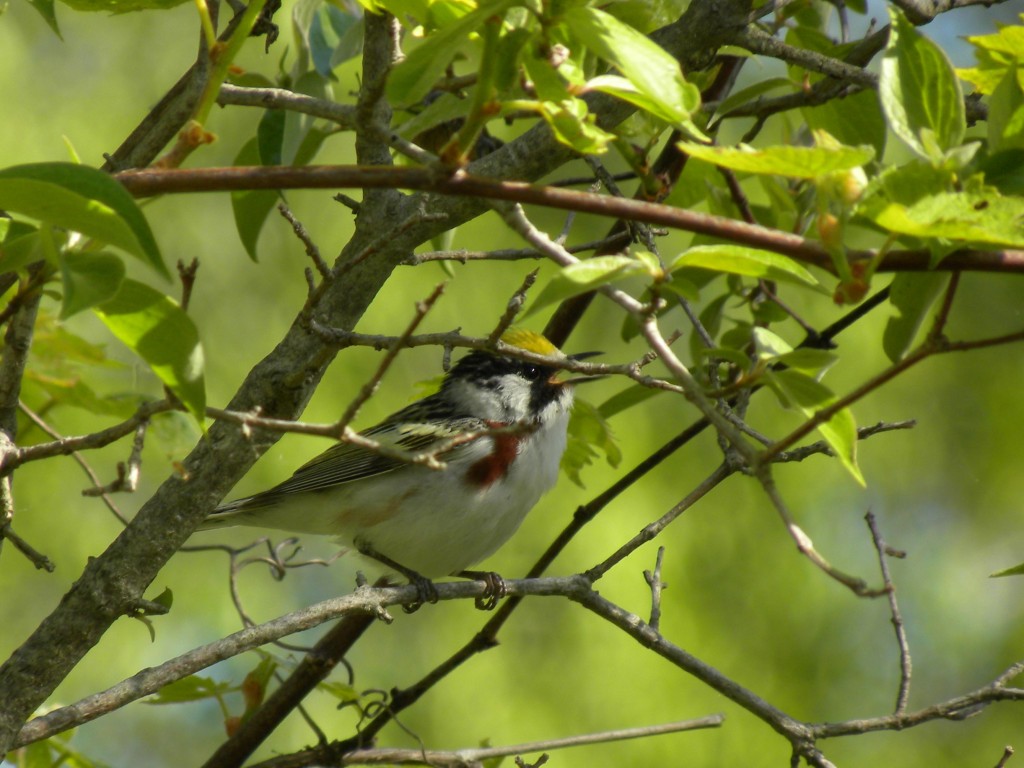
The Philadelphia Vireo was quicker to move away but I studied it long enough to refresh my memory. They’re tricky to separate from the more common Red-eyed Vireo, their songs are almost identical and they’re very similar in general appearance, however the Philadelphia is a bit smaller, proportionately heavier and has lightly washed yellow underparts.
Around midday I explored an area of rich deciduous forest intermingled with expensive summer homes. I heard a Wood Thrush singing from the forest floor, and from high above a Blackburnian Warbler. Then my attention was drawn to the vocal antics of a trio of Red–headed Woodpeckers, their throaty “kwerrr” sound is a bit like that of their near cousin the Red-bellied Woodpecker. The treesome seemed to be trying to decide who was in charge and who owned which piece of forest. Red-headed Woodpeckers have become uncommon in Ontario (while at the same time Red-bellied Woodpeckers have greatly expanded their range.) Few birds are quite as dramatic in appearance or quite as welcome; certainly welcome enough to be my bird of the day despite much strong competition before breakfast.
